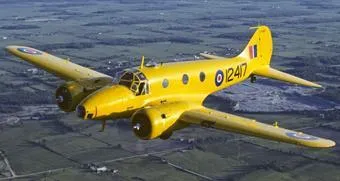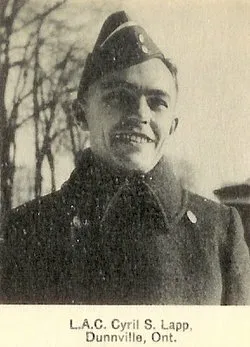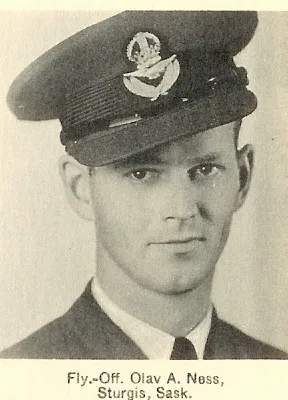Hyer, Glen Kenneth (Civilian)
Killed in Flying Accident 1942-March-18


Birth Date: 1907-October-05
Born:
Parents:
Spouse: Helen A Huling
Home: Warren, Pennsylvania USA
Enlistment:
Enlistment Date: unkown date
Service
RCAF
Unit
6 AOS- Air Observer School
Base
Prince Albert, Saskatchewan, Canada
Rank
Civilian
Position
Pilot
Service Numbers
Crew or Other Personnel
Anson R9740
Accident Card - Avro Anson Mk. I serial:R9740
This accident involved 1 aircraft on 1942-March-18. Anson s/n R9740 (formerly 9740).
This accident involved 4 people. Hurst HW, Hyer GK, Lapp CS, Ness OA
This accident had 4 fatalities. Flying Officer Olav Alfred Ness RCAF Killed in Flying Accident service no:C/7174 Anson R9740, Leading Aircraftman Harvey William Hurst RCAF Killed in Flying Accident service no:R/127999 Anson R9740, Civilian Glen Kenneth Hyer RCAF Killed in Flying Accident service no: Anson R9740, Leading Aircraftman Cyril Samuel Lapp RCAF Killed in Flying Accident service no:R/122599 Anson R9740
Anson serial: R9740

Canadian Warplane Heritage Museum
The Museum's Anson Mk. V was built by MacDonald Brothers in Winnipeg in 1944. It flew with No. 7 Photographic Wing and No. 414 Squadron in Ottawa on photo survey work until the late 1940s. In 1956, it was purchased by INCO and used for mineral surveying until 1980, when it was donated to the Museum. The exterior is painted in the yellow colour common to all BCATP trainers and is in its same wartime RCAF markings.
The Avro Anson was known by a number of nicknames including "Faithful Annie" or "Flying Greenhouse". It was the first aircraft to be flown by the Royal Canadian Air Force to have a retractable undercarriage, which was a comparative novelty in 1936. In 1940, a Canadian government owned company, Federal Aircraft Limited, was created in Montreal to manufacture the Anson for Canadian use. Nearly 3,000 Anson aircraft were produced and, in the early days of the British Commonwealth Air Training Plan (BCATP), the Anson was the standard trainer for many pilots, observers (navigators), wireless operators and bomb aimers. More than 20,000 aircrew received training on the Anson. In Canadian service, the aircraft was substantially re-designed with the substitution of North American engines and many other airframe and equipment changes. Harold Skaarup web pages
Aircraft Images
Anson R9740
Anson Mk. I R9740
Winter conversion kit installed during assembly at MacDonald Brothers, invoiced cost was $688.21. To No. 4 Training Command on 4 November 1940. To No. 2 Training Command on 1 February 1941, for use by No. 33 Service Flying Training School at Carberry, Manitoba. To MacDonald Brothers Aircraft for overhaul, 28 February to 16 April 1941. Transferred from RAF account to BCATP account on 16 April 1941. Noted at the time as one of 15 RAF account single control Ansons exchanged for dual control Ansons with the JATP account. To No. 2 Training Command on that date, for use by No. 6 Air Observer School at Prince Albert, Saskatchewan. Category A crash at 20:30 on 18 March 1942, 6 miles south of Kinistino, Saskatchewan (40 miles south-east of Prince Albert) during a night navigation exercise. All 4 occupants killed: civilian pilot G.K. Huer (or Hyer?), Flying Officer O.A. Ness, Leading Aircraftman H.W. Hurst and Leading Aircraftman C.S. Lapp. Scrapped by No. 6 AOS.1940-10-14 Taken on Strength MacDonald Brothers Aircraft 2019-08-20
1942-March-18 Accident: 6 Air Observer School Loc: Kinistino Names: Hurst | Hyer | Lapp | Ness
1943-01-07 Struck off Strength Struck off, reduced to spares and produce 2019-08-20
Unit Desciption
6 AOS (6 Air Observer School)
Air Observers were later called "navigators". For recruits in this stream, the training path after ITS was 8 weeks at an Air Observer School (AOS), 1 month at a Bombing & Gunnery School, and finally 1 month at a Navigation School. The Air Observer schools were operated by civilians under contract to the RCAF. For example, Nos. 7, 8, and 9 were run by CP Airlines. However, the instructors were RCAF. The basic navigation techniques throughout the war years were dead reckoning and visual pilotage, and the tools were the aeronautical chart, magnetic compass, watch, trip log, pencil, Douglas protractor, and Dalton Navigational Computer. They trained in the Avro Anson.
RCAF.info - RCAF Station Prince Albert SK
RCAF.info - Relief Landing Field Hagen SK
![]() Saskatchewan Virtual War Memorial - History 6 AOS
Saskatchewan Virtual War Memorial - History 6 AOS



